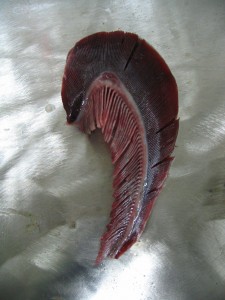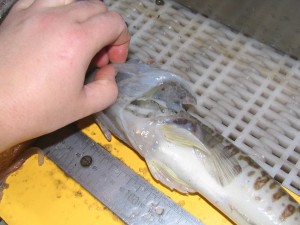I love fish. Not (just) to eat, but to study and learn about and at times just marvel at their beauty. They are arguably the most diverse vertebrate group (and easily arguable if you take the cladistic view that all vertebrates are, at heart, just highly modified fish). But even focusing solely on actinopterygians (ray-finned fish) every aquatic niche is filled by one species or another, from the poles to the equator, from the high Tibetan plateau to the depths of the ocean where sunlight is a distant memory. If there’s water chances are there’s fish.
My particular passion is for deep-sea and polar fish. They have, in my opinion, some of the weirdest adaptations to their environment and I’ve reached a point (right around the time a fish with a transparent head was filmed in the wild!!) where nothing they can do can surprise me.
Despite my jaded outlook I like to keep an eye out for interesting news stories and the other day I stumbled across a story in the Independent about a ‘mysterious fish with clear blood’. I read the story with increasing disappointment as I realised the fish was mysterious only to the reporter, but it provides a perfect opportunity to share the wonders of icefish with a wider audience.
Icefish (Channichthyidae) live in the Southern Ocean. They are a family in the suborder Notothenioidei, a group found in the Antarctic and sub-Antarctic, and have been a love of mine for almost a decade. Notothenioids live in water which reaches sub-zero temperatures, but where their softer, lower-latitude relatives would freeze instantly, they swim merrily on. They can do this due to adaptations, one shared by most Notothenioids and one unique to icefish.
The first adaptation is, in every sense of the word, the coolest I know – they have evolved antifreeze! Antifreeze glycoproteins to be exact. These AFGPs inhibit the growth of ice crystals and prevent the blood and tissues from freezing.
The second adaptation, found only in icefish, has resulted from the interplay of two properties: at low temperatures fluids become viscous and large molecules, such as haemoglobin, increase this viscosity further still; and oxygen solubility increases as water temperature decreases. Icefish have exploited this second property to counter the first. Haemoglobin is an oxygen carrier, but at low temperatures it becomes more of a hindrance than a help. Icefish have a leathery skin instead of scales, allowing oxygen to be transported across their skin as well as their gills, and the high oxygen concentration in the water means that the haemoglobin can be lost with little reduction in oxygen capacity which is exactly what they have done. It helps that these fish aren’t exactly active, preferring to wait for prey to come their way than actively seek it out, but even so I think there are few other animals that could lose haemoglobin and still be alive, let alone live with few negative consequences.
The most striking consequence of this loss is that icefish have white flesh and gills. Normally gills are one of the reddest parts of a fish due to the need for blood to collect oxygen as water passes over them. But in icefish their gills are white; freakily so.


The news story, originally from AFP and posted almost verbatim on several websites, was extraordinarily hyperbolic. It gave the impression that haemoglobin- and scale-loss were unique to this species. Yet, as I’ve said, haemoglobin loss is found in all members of the icefish family and scale loss is found in many species.
The real story is that they have managed to get the species to spawn in captivity, which is a fantastic achievement as anyone who knows anything about closed life-cycle aquaculture will know. Unfortunately it seems that this legitimate success is not sufficiently newsworthy and so a false story has been created. The upside I get to talk about one of my favourite fish so I guess it’s not all bad news!
Author
Sarah Hearne: hearnes[at]tcd.ie
Photo credit
Sarah Hearne


